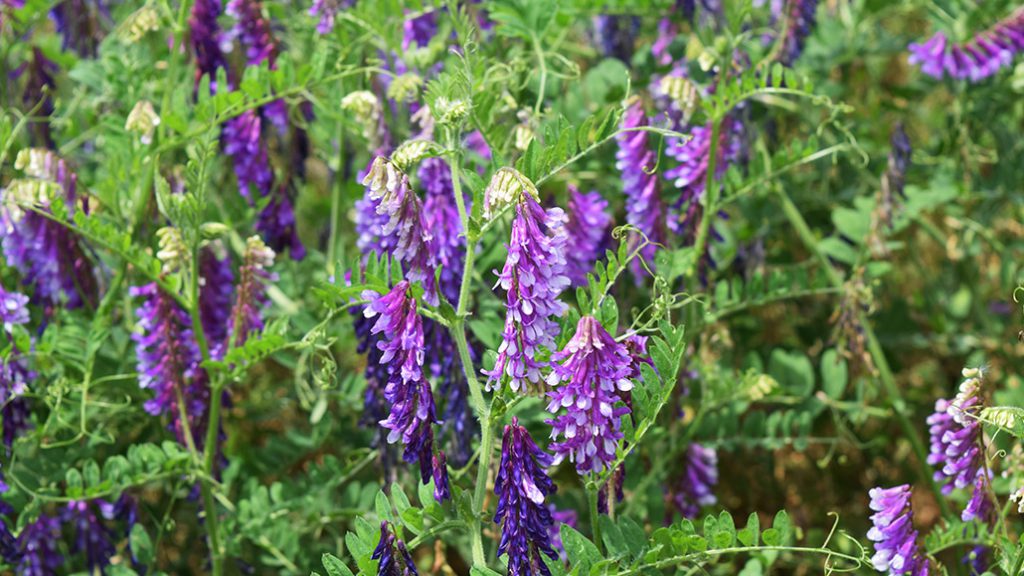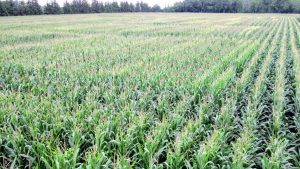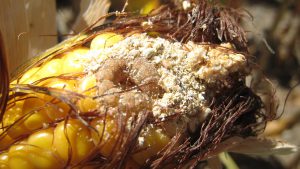Legume cover crops
HAIRY VETCH SHOWS PROMISE

A LEGUME THAT has had a bad reputation as a weed for decades may make the best cover crop, according to research conducted at Agriculture and Agri-Food Canada’s Harrow Research and Development Centre.
“Hairy vetch had the best performance by far,” says Dr. Xueming Yang, the soil scientist who is working on the project with colleagues Dr. Dan Reynolds and Dr. Craig Drury.
The aim of the research project — which runs from summer 2017 to spring 2021 — is to make more effective use of legume cover crops (seeded in the summer after winter wheat harvest) in soybean-winter wheat-corn rotations on a Brookston clay loam — the most prevalent agricultural soil in southwestern Ontario.
The study compares hairy vetch, red clover, and a crimson and white clover mix in terms of how well they contribute nutrients — especially nitrogen (N) – to the subsequent main crop (corn) and what they do for soil health. The anticipated outcome is a ranking of cover crop efficacy, and recommendations on how to best terminate cover crops for the best agronomic and soil performance.
One objective was to find out how much nitrogen cover crops can store at the time when the cover crop was terminated by plow-down in late fall or by herbicide spray-down in spring before corn planting. “Hairy vetch is a dependable legume with large amounts of biomass N,” says Yang.
They found more nitrogen in hairy vetch aboveground biomass (186 kg N/ha) than in the crimson/white clover (144 kg N/ha) and the red clover (89 kg N/ha) by late November when the cover crops were plowed down.
“The legumes in the trial are winter hardy, and all get lush regrowth the following spring before spraying them with herbicides,” says Yang.
They found 160, 170, and 172 kg N/ha stored in aboveground biomass of crimson/white clover mix, hairy vetch, and red clover, respectively, before corn planting.
NITROGEN CREDITS
The trial also evaluates the nitrogen credit of cover crops, in other words, the amount of nitrogen fertilizer that is replaced by legume cover crops in corn production. A control corn crop (i.e. corn with no prior cover crop) was fertilized with 200 kilograms (kg) of N per hectare, and corn following cover crops was fertilized with 100 kg N per hectare.
“Corn responds differently to legumes and cover crop termination methods,” says Yang. “When corn is planted into a field where legumes were terminated by fall plow-down, we got a nitrogen credit of 70 to 80 kg N/ha, which was similar among the three legumes”.
When corn is seeded into a no-till or a strip-tilled field where legumes were killed by spring spray-down, the nitrogen credit varied a lot, from as low as 30 kg N/ha for clovers to as high as 95 kg N/ha for hairy vetch.
“The low nitrogen credit from the clovers was not due to low legume nitrogen in soil — the nitrogen is there,” says Yang. “The reason was that there was poor corn emergence in the clover fields in the spring which resulted in a low plant population at harvest for this clay soil.”
On average, the corn yield following a cover crop of hairy vetch was nine to 15 per cent greater than corn yields following red clover and crimson/white clovers. “In 2020, corn following hairy vetch had a similar yield as the yield of the control corn,” Yang says.
For hairy vetch, reducing N fertilizer to one-half the control amount (100 kilograms N/hectare) provided similar yields as the control field (13 tonne/ha), and a substantial savings in N fertilizer costs.
“All legumes in the trial are winter hardy, but an advantage of hairy vetch is that when you plant it in late summer, it’ll not only accumulate more biomass and nitrogen than red clover by winter, but you can also get a more lavish regrowth than the crimson/white clover the following spring,” says Yang.
“Hairy vetch is also very easy to terminate,” he says, adding that the plant’s reputation as a weed that can’t be controlled seems undeserved, as it was found in this study to be easy to establish and kill.
Strip tillage was used for the first time over the last two years, and it seemed to work very well in terms of improving the quality of the seed bed for hairy vetch and enhancing corn response to legume nitrogen.
Overall, Yang highly recommends hairy vetch as a cover crop after winter wheat in southwestern Ontario.
“If you want a stable and reliable legume nitrogen credit for your corn, use hairy vetch and plow it down as late in the fall as you can,” he says. “If you want a maximum nitrogen credit, use hairy vetch as a cover crop and then terminate it in spring before corn planting.”
SOIL PHYSICAL HEALTH
Dr. Reynolds is evaluating soil physical health properties — including organic carbon content (OC), bulk density (hardness of the soil), plant available air capacity (PAAC), plant available water capacity (PAWC), and permeability (how easy water moves through soil).
“Near-surface OC was always greater under no-till than under moldboard plow,” he says. In the cover crop phase, OC increases to about two per cent, but in the corn phase, it declines back down to about 1.5 to 1.8 per cent. Both are on the low side — optimal OC on these clay loam soils for crop growth is three to five per cent, and tillage of heavy soils may cause loss of structure when OC is less than about 2.3 per cent.
“Cover crops haven’t yet delivered on OC levels,” Reynolds says, adding that more years of data are required to get a good overall picture. He notes that there is virgin Brookston clay loam soil in a woodlot adjacent to the experiment that has about six per cent organic carbon.
“When you dig into the woodlot soil, it’s black as coal with a nice crumb structure, and it falls apart in your hand,” he says. “So, there’s clearly lots of room for improvement — we know this soil can have high organic carbon levels, we just have to figure out how to do that and grow crops too.”
In terms of bulk density or hardness, the soil was consistently lower under cover crops than under corn – for all tillage systems. The optimal range for soil bulk density is about 0.9 to 1.2 megagrams per cubic metre, and the near-surface soil under cover crops is regularly at the top of that range. In the corn, soil density increases to about 1.4 — a hardness level that starts to restrict root growth in most clay loams, Reynolds says.
“Roots need air to function,” he says, noting that the soil’s near-surface plant available air capacity (PAAC) was at about 15 per cent under cover crops, but down to 10 to 12 per cent during the corn phase.
He says that crops in fine-textured soils become susceptible to aeration deficits once soil air capacity gets below about 14 per cent. The ideal PAAC for crops is about 20 per cent — which is frequently the case in sandier soils.
AVAILABLE WATER
Plant available water capacity (PAWC) indicates the ability of a soil to store water that can be used by crops.
“What’s interesting is that even though Brookston clay loam can hold a lot of water, typically less than half of that water is available to crops,” he says.
PAWC was consistently greater under cover crops (10 to 15 per cent) than corn (below 10); however, ideal PAWC is about 20 per cent, while less than 10 per cent can make the soil droughty. Water availability is a tug of war between the soil and the crop, and the soil always gets the upper hand in the end, he says.
In terms of permeability, Reynolds says he didn’t see any clear differences between cover crops and corn. This was likely caused by the many cracks, worm holes, and root channels that are typically present in the near-surface of Brookston clay loam soil.
Reynolds is surprised that the soil improvements accrued under cover crops largely disappear during the following corn year. “The benefits just don’t hang around,” he says, noting again that it might be a function of the short timeline of the experiment.
He feels that perhaps timed sampling of the soil — at different periods during the growing season — might clarify what is going on.
This article features research funded by Grain Farmers of Ontario. •

























